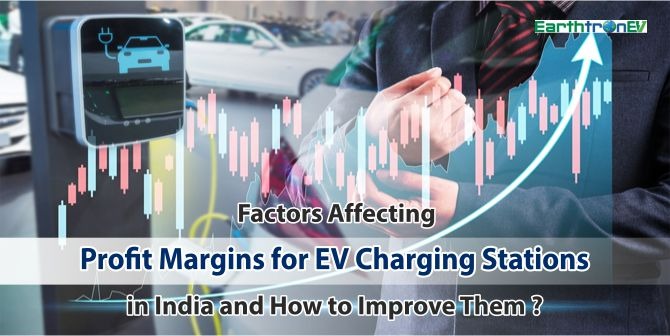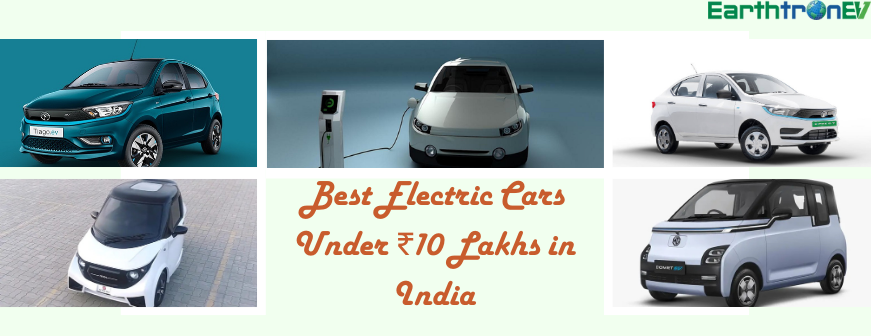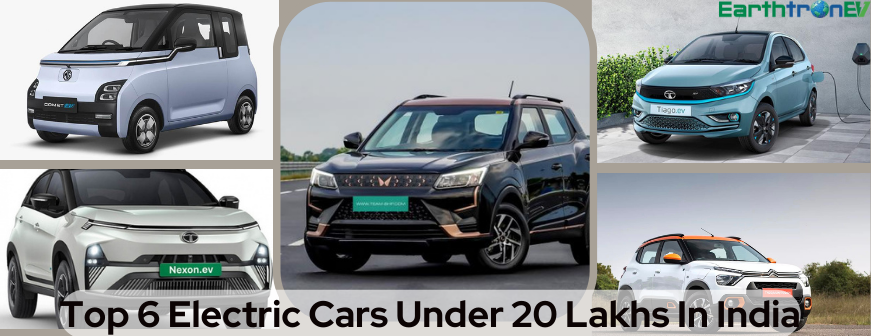Are you looking to invest in an EV charging station business in India? Then understanding the factors that affect your profit margins is crucial. There’sThere’s no denying that the demand for electric vehicles and their supporting infrastructure has been overgrowing in recent years, but what does this mean for business owners operating EV charging stations? In this blog post, we’ll take a deep dive into some of the critical factors affecting profit margins for EV charging stations in India and provide actionable tips on improving them – from optimizing your pricing strategy to leveraging technology like remote monitoring and analytics. So let’slet’s get started!
Introduction: Overview of EV Charging Stations in India
Electric vehicle (EV) charging stations are essential infrastructure for developing electric mobility in India. They provide the means to recharge the battery packs of EVs, which power the vehicles.
1. Public fast-charging stations: These are usually installed by government entities or energy utility companies, and they allow EVs to be quickly charged at a high rate (typically 30 to 60 kilowatts).
2. Semi-public slow-charging stations: These are usually installed by businesses, such as shopping malls or hotels, allowing EVs to be charged at a lower rate (typically 2 to 20 kilowatts).
3. Private home charger: These are installed in homes, charging EVs at the lowest rate (typically 1 to 6 kilowatts).
The operation cost of an EV charging
Factors Affecting Profit Margins for EV Charging Stations
1. Costs of setting up and maintaining the charging infrastructure: The cost of setting up EV charging infrastructure is high. In addition, land costs and other associated permits and fees can add to the overall expense.
2. Limited government subsidies: In India, government subsidies are currently available only for public chargers installed by registered companies. This limits the number of potential customers that an operator can target, as well as the revenue that can be generated from each station.
3. Lack of awareness about EVs and charger stations: A lack of awareness about EVs and their benefits and a lack of understanding about how to charge them continues to be a challenge in India. This lack of awareness leads to low usage rates at EV charging stations, affecting profitability.
4. Crowding at popular charger locations: Many charger stations are located in crowded areas such as shopping malls or multi-level parking structures where it can be challenging to find a parking spot. This affects customer satisfaction and reduces the number of cars serviced at the location, impacting profitability.
5. Poor quality chargers and unreliable service: Low-quality chargers and unreliable service continue to be issued in India. This leads to customer satisfaction and contributes to higher profitability for operators.
Supply and demand
The electricity per unit charged to an EV user is based on the cost of power generated or imported by the utility, the variety of taxes imposed by state and local governments, the distribution charges levied by transmission companies, and the losses incurred in distributing power. In India, distributors are allowed a 5% nominal loss rate. However, actual technical and commercial (AT&C) losses are much higher at around 20%. AT&C losses in India average about 20%, which means that only 80% of billed amounts are collected. This results in significant cross-subsidization between different consumer categories. Low collection rates also adversely affect the cost of power for EV users.
Several other factors also affect the price of electricity charged to EV users. These include:
1) Cross-subsidies: EV users are often required to pay higher rates than other consumer categories to subsidize subsidies for domestic consumers, agriculture, and industry.
2) Taxes: Various state and local taxes make up a sizeable portion of the final price that EV users pay for electricity.
3) Transmission and distribution charges: The fees levied by transmission companies for using their infrastructure can add substantially to the final cost of power for EV users. In addition, distributors are allowed a 5% nominal loss rate. However, actual technical.
Types of Customers
There are three types of customers for EV charging stations in India: private, commercial, and governmental.
Private customers own an electric vehicle and need a place to charge it. Commercial customers like taxi or delivery companies own or operate electric vehicles. Governmental customers are government agencies that use electric cars, such as police departments or public transportation systems.
Location Factors
Several location factors can affect the profit margins for EV charging stations in India.
1. The type of location: If the charging station is located in a high-traffic area, it will have higher profits than if it is located in a low-traffic area.
2. The density of competing stations: If there are many other EV charging stations in the same vicinity, profits will be lower due to increased competition.
3. The price of electricity: The cost of electricity is a significant factor in determining profits for EV charging stations. If the price of electricity is high, yields will be lower.
4. The quality of the infrastructure: If the infrastructure supporting the EV charging station is better, it will have higher profits as customers may go to another station with better infrastructure.
5. Government incentives: Government incentives can significantly influence EV charging station franchise profits. If there are generous incentives offered, yields will be higher.
Pricing Strategies
Many factors affect the profit margins for EV charging stations in India. These factors include the cost of electricity, equipment, and installation, the number of units sold, and the number of charging sessions.
It is essential to consider all of these factors to improve profit margins and find ways to reduce costs while increasing revenue. One way to do this is to offer discounts or other incentives to customers who use the charging station frequently. Another way to increase revenue is to provide services such as car washing or detailing while the car is being charged.
Maintenance cost
The cost of maintaining an EV charging station can significantly affect profit margins. However, there are several ways to reduce these costs and improve profitability.
One way to cut maintenance costs is to choose a reliable charger with minimal moving parts. A good quality charger will require less frequent servicing, saving on both labor and spare parts costs.
Charge point operators can also save on maintenance costs by signing up for a comprehensive service contract. This type of contract typically covers all aspects of charger maintenance, including regular servicing, replacement of parts, and 24/7 emergency support. By opting for a service contract, operators can avoid employing their in-house maintenance team, which can be costly.
Utilizing remote monitoring systems can help operators to reduce maintenance costs by enabling them to quickly identify and resolve any issues that arise with their chargers. These systems usually consist of sensors that collect data on the charger’s performance, which is then transmitted to a central server. Operators can use this data to diagnose problems and take corrective action remotely without needing an on-site visit.
How to Improve Profit Margins of EV Charging Stations
Station owners can do a few key things to increase their profits.
1. First, they can increase the price per kWh of electricity. This is the simplest way to increase profits directly, and it doesn’t-doesn’t require any changes to the infrastructure or operations of the station.
2. Second, station owners can improve efficiencies by reducing power losses from heat and electrical resistance in cables and by improving the management of demand charges from the utility company. These measures can significantly impact profitability, especially for stations with high electricity prices.
3. Third, station owners can generate additional revenue from ancillary services such as advertising, carwash services, and rental cars. These services can attract new customers and create loyalty among existing customers.
4. Station owners can minimize costs by carefully selecting equipment and service providers, negotiating favorable contracts, and taking advantage of government incentives.
Develop an effective pricing strategy
After deciding the type of EV charging station you want to install, it’s time to develop an effective pricing strategy. The price you charge for each unit of electricity will directly impact your profits.
To profit from EV charging, you’ll need to find the right balance between what your customers are willing to pay and the electricity cost. Many factors will affect how much your customers are willing to pay, including:
The type of vehicle they own: Electric cars come in all shapes and sizes, and some are more expensive than others. If you’re catering to a luxury market, you can charge more per unit of electricity than if you’re targeting budget-conscious consumers.
The range of their vehicle: The further someone can travel on a single charge, the more they’re-they’re likely to be willing to pay for additional units of electricity. If your target market is long-distance commuters, you can charge more per unit than if your target market is residents.
The cost of living in your area: People in expensive cities are generally more willing to pay higher prices than people in cheaper areas. If you’re located in a high-cost-of-living area, you can charge more per unit than if you’re located in a low-cost area.
Once you’ve considered these factors, you can develop your pricing strategy.
Increase the customer base
Several factors can affect the profit margins for EV charging stations in India. Some of these include the cost of setting up and maintaining the charging station, the number of customers using the station, and the price of electricity.
To improve profit margins, it is essential to focus on increasing the number of customers using the charging station. This can be done by marketing the station to potential EV owners and making it convenient for them to use. Offering discounts or loyalty programs can incentivize customers to use your charging station over others. Ensuring your charge points are compatible with various EVs will also help attract more customers.
Utilize promotional activities
Many promotional activities can be undertaken to improve profit margins for EV charging stations in India. Below are just a few examples:
1. Use social media platforms to share information about your EV charging station business and promote special offers or discounts. Target key influencers in the Indian EV space who can help spread the word about your brand.
2. Develop partnerships with businesses complementary to your own, such as electric vehicle manufacturers, car dealerships, or other companies that service EVs. This can help you reach a broader customer base and generate more leads.
3. Hold events or workshops at your EV charging station to educate drivers about the benefits of going electric. Not only will this create goodwill for your business, but it can also lead to more customers using your services.
4. Get involved with local organizations or groups that support EV development in India. This can increase awareness of your business and show potential customers that you’re committed to helping further the adoption of electric vehicles in the country.






